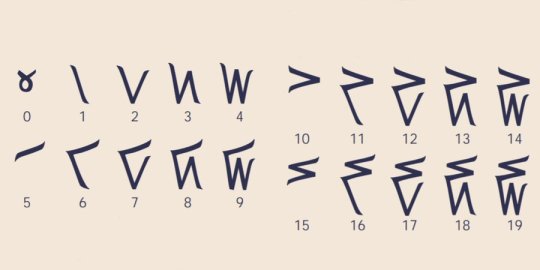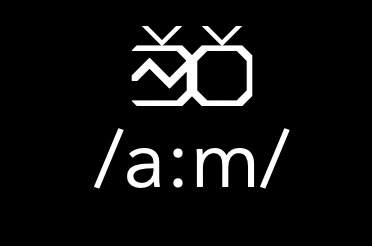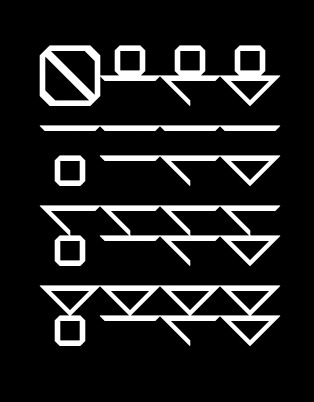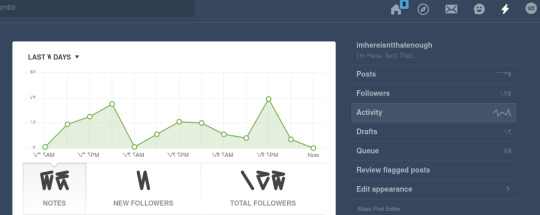#Kaktovik numerals
Link
In the remote Arctic almost 30 years ago, a group of Inuit middle school students and their teacher invented the Western Hemisphere’s first new number system in more than a century. The “Kaktovik numerals,” named after the Alaskan village where they were created, looked utterly different from decimal system numerals and functioned differently, too. But they were uniquely suited for quick, visual arithmetic using the traditional Inuit oral counting system, and they swiftly spread throughout the region. Now, with support from Silicon Valley, they will soon be available on smartphones and computers—creating a bridge for the Kaktovik numerals to cross into the digital realm.
Today’s numerical world is dominated by the Hindu-Arabic decimal system. This system, adopted by almost every society, is what many people think of as “numbers”—values expressed in a written form using the digits 0 through 9. But meaningful alternatives exist, and they are as varied as the cultures they belong to.
Continue Reading
30K notes
·
View notes
Text
"In the remote Arctic almost 30 years ago, a group of Inuit middle school students and their teacher invented the Western Hemisphere’s first new number system in more than a century. The “Kaktovik numerals,” named after the Alaskan village where they were created, looked utterly different from decimal system numerals and functioned differently, too. But they were uniquely suited for quick, visual arithmetic using the traditional Inuit oral counting system, and they swiftly spread throughout the region. Now, with support from Silicon Valley, they will soon be available on smartphones and computers—creating a bridge for the Kaktovik numerals to cross into the digital realm.
Today’s numerical world is dominated by the Hindu-Arabic decimal system. This system, adopted by almost every society, is what many people think of as “numbers”—values expressed in a written form using the digits 0 through 9. But meaningful alternatives exist, and they are as varied as the cultures they belong to.
The Alaskan Inuit language, known as Iñupiaq, uses an oral counting system built around the human body. Quantities are first described in groups of five, 10, and 15 and then in sets of 20. The system “is really the count of your hands and the count of your toes,” says Nuluqutaaq."
Read the full piece here: https://www.scientificamerican.com/article/a-number-system-invented-by-inuit-schoolchildren-will-make-its-silicon-valley-debut/
745 notes
·
View notes
Photo

I think I’ve posted this before, but there was just an article published in Scientific American that’s behind a paywall and basically just repeats what’s below. What fascinates me is how the math is done using the numerals.
Anchorage Daily News, 2022-11-06:
Almost 30 years ago, a group of Kaktovik students invented a numbering system that reflected the way they counted in Iñupiaq and made math more intuitive for them. Soon, anyone in the world will be able to type Kaktovik numerals on a computer. [...]
Most countries use the Hindu-Arabic base-10 numbering system where numbers range from 0 to 9. But in Iñupiaq — as well as other Inuit and Yup’ik languages — the numbers go from 0 to 19, which makes it a base-20 system. [...]
"The Iñupiaq word for the number 20 is iñuiññaq, which represents a whole person," Judkins said. "You have all 20 appendages — your 10 fingers and your 10 toes. A lot of the classroom activities that we use now with this numbering system is in relation to those body parts and those appendages." [...]
Kaktovik students came up with digits from zero through 19, composed of straight strokes joined at sharp angles that you can write without lifting a pen. [...]
“We didn’t want them to look like any other numbers,” Solomon said. “It was our whole math class that did it together.” [...]
11 notes
·
View notes
Text
writing my story ideas in shavian is so sick, my notes look like ancient magician textbooks

#also with a mix of kaktovik iñupiaq numerals cuz they're just that cool#shavian#kaktovik iñupiaq numerals#writing#writing notes
1 note
·
View note
Note
I stumbled across this article this morning and thought you might find it interesting if you weren't already aware!
https://www.adn.com/alaska-life/2022/11/06/numerals-invented-by-kaktovik-students-can-now-be-used-digitally/
Ooh this is incredible. I have seen the numerals before but was never taught them. They do make the counting system (which i've had trouble with) much more intuitive. I wonder if there's any plans to design a typical playing card deck (the playing card suits already have Inupiaq names so why not) or perhaps even an Uno deck with the numerals to use as a teaching tool. Tricking kids into learning by making it a game is a time tested teaching method, after all.
For anyone who doesn't feel like looking at the article, it contains a chart for the numerals from zero to fifty, shown below

The "see note" by the zero is likely refering to the concept of zero as a number traditionally not existing in Inupiaq culture. The current Inupiaq word for the number zero is suitchuq which i believe means "is nothing"
The article also has a link to a virtual keyboard with the 0-9 Kaktovik numerals instead of Arabic ones, found here
#response#eskimo on main#i'm totally up for talking about inupiaq playing card vocab if anyone is interested
48 notes
·
View notes
Text

^ kaktovik iñupiaq numerals btw. i love them very much
14 notes
·
View notes
Text
How I Learned to Stop Worrying and Love Parabolas

A stylized representation of Cimar's core glyphs
| ⇇ first | ← previous | next → |
Cimar's native writing system is a right-to-left abugida. It was designed to be simple to a fault. It takes maybe 30 minutes to pick up, half that if you know IPA.
Cimar has a functional typeface that I used throughout the reference grammar and dictionary. It does require a Hebrew QWERTY layout, and there are a few bugs, but hey, it works! I've found it works best displayed white-on-black though it is legible either way.
Consonants
Consonants are written as parabolic glyphs. The direction the glyph points represents the place of articulation, and the diacritic in the center represents the manner. As a result, a clear pattern emerges.

Cimar's consonants arranged into an IPA table.
Vowels
Cimar's vowels are represented by diacritics which are placed over the parabolas. These diacritics are mandatory, but they aren't fused into the letter the same way it may be in a full abugida. But there's a catch -- the vowel mark is placed above the consonant that follows it, rather than the one that precedes it like in, well, basically every other writing system. It is read in a kind of backwards hopping motion "⤺"

Cimar's vowel diacritics. Note the use of /h/ as a placeholder.
In the event that no consonant follows the vowel, an /h/ glyph is used as a placeholder. Phonemic long vowels are represented by placing a vowel diacritic on an /h/, and placing a second diacritic on the next glyph.

Numerals
Nothing too special here -- it's the Kaktovik system, but hexadecimal and with triangles. Each line on the top triangle represents a value of 4, and the bottom 1. This excludes the square/circle shapes which are placeholders for 0.

The numerals 0-F. (kor-jak). Note the left-to-right ordering. A crossbar was put through 0 in a recent revision to differentiate it from /h/.
From our perspective, these numbers are written left-to-right. In reality, Cimar does what Modern Hebrew does: it counts from lowest digit to highest instead of the other way around. So, for instance, they say and write the equivalent of "one and twenty" instead of "twenty one".
Numbers above F are always written using numerals rather than through spelling. Single digit numbers can be written either way. There is no standard, with one exception: when 0 is used as a negative particle, it's supposed to be spelled out as -kor. That doesn't stop people from writing it as -0 anyways.
Punctuation
Cimar's punctuation inventory is heavily stripped down, and multiple latin punctuation marks can be represented by one Cimar mark. There's also one small but important thing to note here: since Cimar lacks a hyphen, an asterisk (*) is used instead. This is important for things like case endings which are separated from the rest of the word by a hyphen in the romanization.

5 notes
·
View notes
Text

Playing chess using Inuit numbers would be a creative and educational twist on the traditional game. Here’s how you could set it up:
Assign Inuit Numbers to Chess Pieces:
Each chess piece is assigned an Inuit number. For example, you could use the numbers 1 to 6 for the pawns, and then 7 to 12 for the other pieces, with each number representing a different piece (e.g., 7 for the rook, 8 for the knight, etc.).
Create a Reference Chart:
Make a chart that shows which Inuit number corresponds to which chess piece. This will help players remember the assignments during the game.
Set Up the Chessboard:
Place the Inuit number tokens where you would normally place the chess pieces.
Play Chess:
Follow the standard rules of chess, but move the Inuit number tokens instead of the traditional chess pieces.
Keep Score:
If you want to add an educational component, you could keep score using the base-20 system associated with Inuit numbers1.
This method of playing chess could be a fun way to learn about Inuit culture and their numeral system while enjoying a classic game. Remember, the Kaktovik numerals are a base-20 system, so it might take some practice to get used to this new way of counting and playing1. Enjoy the game!
0 notes
Text
A Number System Invented by Inuit Schoolchildren Will Make Its Silicon Valley Debut
A Number System Invented by Inuit Schoolchildren Will Make Its Silicon Valley Debut, Math is called the “universal language,” but a unique dialect is being reborn…, 2023-04-10 10:45:00,
In the remote Arctic almost 30 years ago, a group of Inuit middle school students and their teacher invented the Western Hemisphere’s first new number system in more than a century. The “Kaktovik numerals,” named…

View On WordPress
1 note
·
View note
Text
Kaktovik Numerals
https://en.wikipedia.org/wiki/Kaktovik_numerals
Comments
0 notes
Text
Been studying the kaktovik numerical system and its definitely my favorite number system now. I know every number and can add, subtract, and almost divide in just a day of studying. Its really amazing how a group of kids were able to make such an easy and efficient way to do math. Im actually gonna start using it in math at school to make things easier.
#the 20 base was actually easier to get used to then i expected#still feels a tad unnatural since im so used to 10 base tho#kaktovik inupiaq#conlang#numerical system
0 notes
Photo

Y’all ever just, switch to a base-20 number system?
11 notes
·
View notes
Text
Languages of the world
Iñupiaq (Iñupiatun)
Basic facts
Number of native speakers: 2,144
Official language: Alaska (United States), Northwest Territories (Canada)
Script: Latin, 24/19/22 letters
Grammatical cases: 4
Linguistic typology: polysynthetic, SOV, ergative-absolutive
Language family: Eskimo-Aleut, Eskimo, Inuit
Number of dialects: 2 main groups
History
1946 - development of the current writing system
2014 - Iñupiaq becomes an official language of Alaska
Writing system and pronunciation
These are the letters that make up the North Slope Iñupiaq script: a ch g ġ h i k l ḷ ł ł̣ m n ñ ŋ p q r s sr t u v y.
These are the letters that make up the Seward Peninsula Iñupiaq script: a b g ġ h i k l ł m n ŋ p q r s sr t u v w y z zr '.
These are the letters that make up the Uummarmiutun script: a ch f g h dj i k l ł m n ñ ng p q r r̂ t u v y.
Iñupiaq uses Kaktovik numerals to represent its base-20 system.

Grammar
Nouns have three numbers (singular, dual, and plural) and four cases (absolutive, allative, ergative, and instrumental).
Verbs are marked for tense, aspect, mood, person, and number. Tense and aspect marking is optional, except for the future tense, which should be explicitly marked.
Demonstratives are classified as either adverbs or pronouns. Together with nouns and verbs, they can have one or more of three endings: postbases, grammatical bases, and enclitics.
Dialects
There are two main dialect groups: Seaward Peninsula and Northern Alaska. Seward Peninsula Iñupiaq includes Qawiaraq and Bering Strait Iñupiaq. Northern Alaskan Iñupiaq includes Malimiut and North Slope Iñupiaq. Uummarmiutun belongs to the North Slope dialect group.
Dialects are not always mutually intelligible, and they present differences in phonology, lexicon, and vocabulary.
23 notes
·
View notes
Photo

The Kaktovik Numeral system used by the Iñupiat of Alaska
25 notes
·
View notes
Text
holy shit kaktovik inupiaq numerals were invented by middle schoolers
#and when standardized tests incorporated them tests scores went from 20th percentile to above average!!!#i knew it was made by studnets I just thought it was like college students not actual children thats so cool!
2 notes
·
View notes